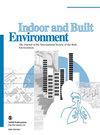2019冠状病毒病大流行期间,建筑学生在物理和虚拟环境中非正式情境下的同伴学习比较
IF 2.9
3区 工程技术
Q2 CONSTRUCTION & BUILDING TECHNOLOGY
引用次数: 0
摘要
本文旨在评估英国建筑系学生在非正式情况下的同伴学习经历,即在正式时间表之外。由于新冠肺炎疫情,该研究对这些学生在物理环境和虚拟环境中的学习经历进行了比较,以了解当这些学生进入不熟悉的学习环境时,是否存在变化、困难和新奇之处。笔者运用实践共同体的理论视角,通过访谈和问卷调查的方式,分别收集学生在这两种环境下的学习经历和故事。研究发现,物理设计工作室的环境和其中的相互参与对学生的个人学习至关重要。因此,即使这些学生在虚拟环境中学习,他们仍然尽可能地模拟一个设计工作室的氛围,以社区的形式来学习。另一个明显的问题是,学生在虚拟环境中通常缺乏点对点的支持,比如建筑知识、IT技能和心理健康。相比之下,这些支持很容易通过物理环境中的同伴学习获得,尤其是设计工作室。基于这一发现,未来的工作应该确定学生从实践社区中获得的建筑知识、技能、价值观和态度。本文章由计算机程序翻译,如有差异,请以英文原文为准。
The comparison between architecture students’ peer learning in informal situations within physical and virtual environments during the COVID-19 pandemic
This paper aims to evaluate British architecture students’ peer learning experiences in informal situations, that is, outside formal timetables. Due to the COVID-19 pandemic, the study made a comparison between those students’ learning experiences within physical and virtual environments, to find out if there are changes, difficulties and novelties when those students were introduced to unfamiliar learning contexts. Using the theoretical lens of the community of practice, the author conducted interviews and questionnaires to collect students’ learning experiences and stories when they were engaged in those two environments, respectively. It was found that the physical design studio environment and mutual engagements within it are essential to those students’ individual learning. Therefore, even if those students learned within the virtual environment, they still tried their best to simulate a design studio atmosphere to learn as the form of a community. Another obvious issue is that students normally lack peer-to-peer support, such as architectural knowledge, IT skills and mental health, when they are engaged in virtual environments. Comparatively, those supports are easily obtained via peer learning within physical environments, especially design studios. Based on the finding, future work should determine what architectural knowledge, skills, values and attitudes students developed from the community of practice.
求助全文
通过发布文献求助,成功后即可免费获取论文全文。
去求助
来源期刊

Indoor and Built Environment
环境科学-工程:环境
CiteScore
6.40
自引率
25.00%
发文量
130
审稿时长
2.6 months
期刊介绍:
Indoor and Built Environment publishes reports on any topic pertaining to the quality of the indoor and built environment, and how these might effect the health, performance, efficiency and comfort of persons living or working there. Topics range from urban infrastructure, design of buildings, and materials used to laboratory studies including building airflow simulations and health effects. This journal is a member of the Committee on Publication Ethics (COPE).
 求助内容:
求助内容: 应助结果提醒方式:
应助结果提醒方式:


